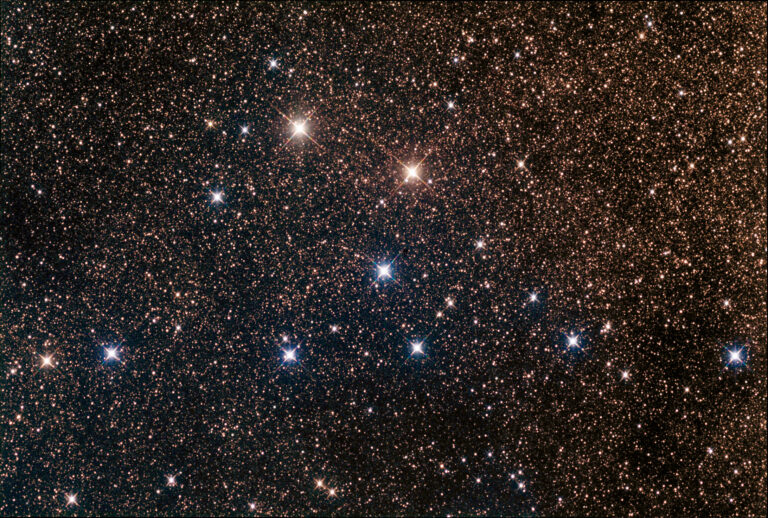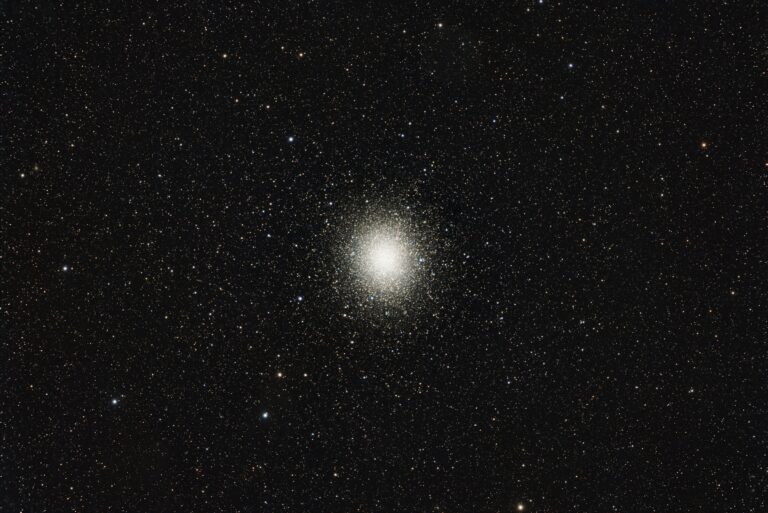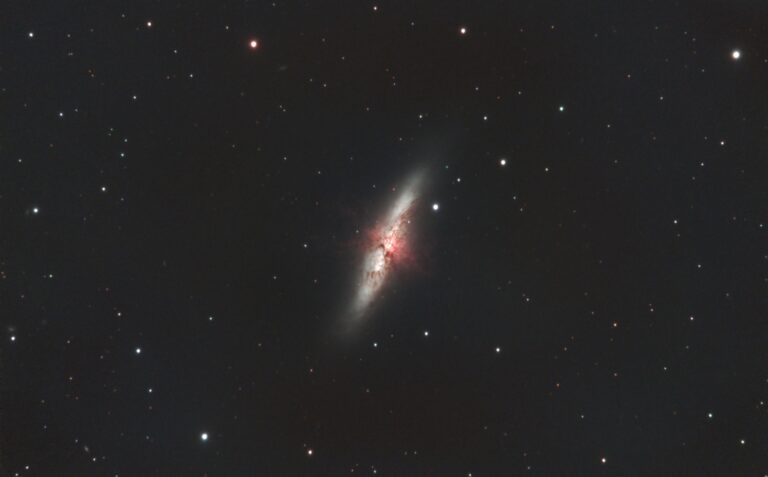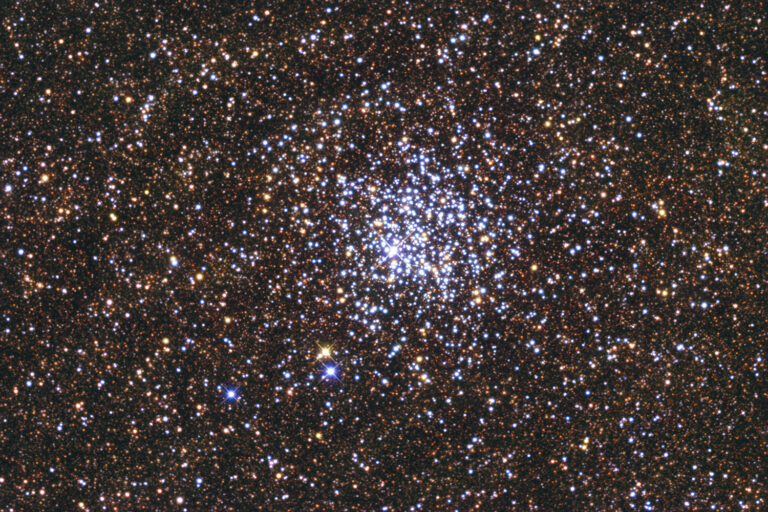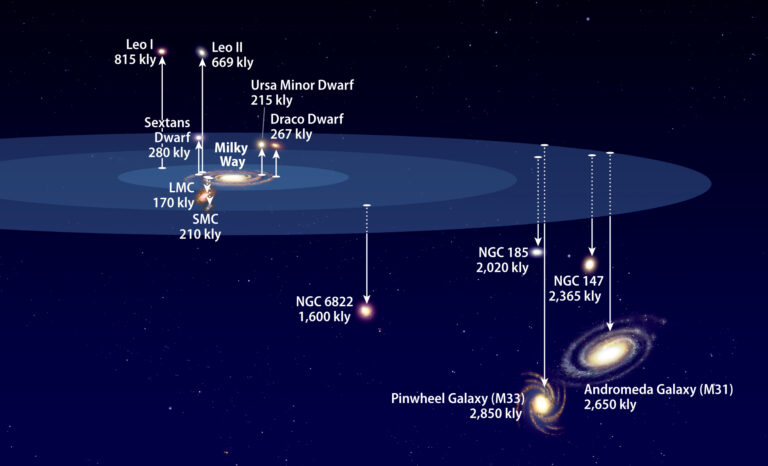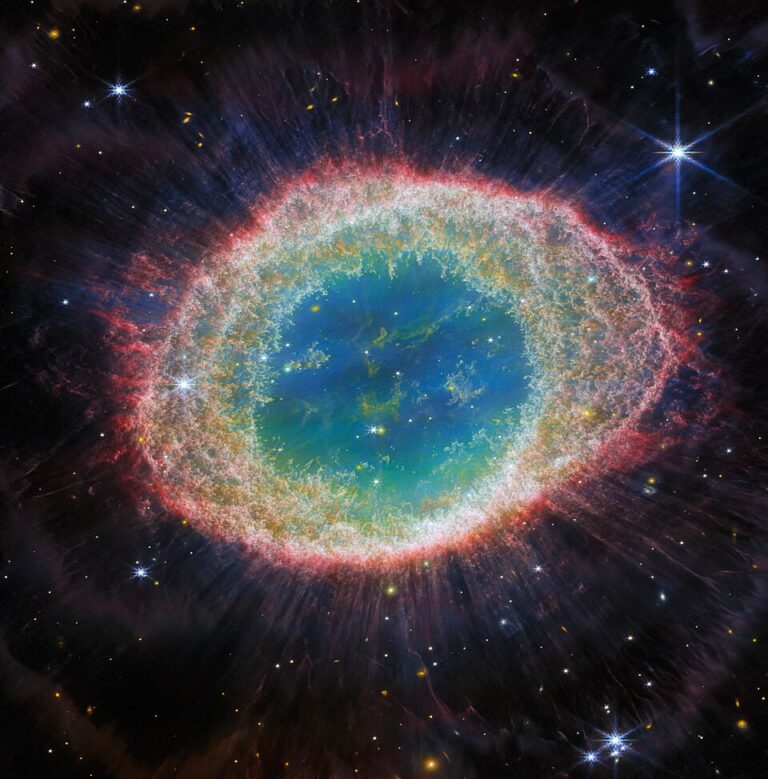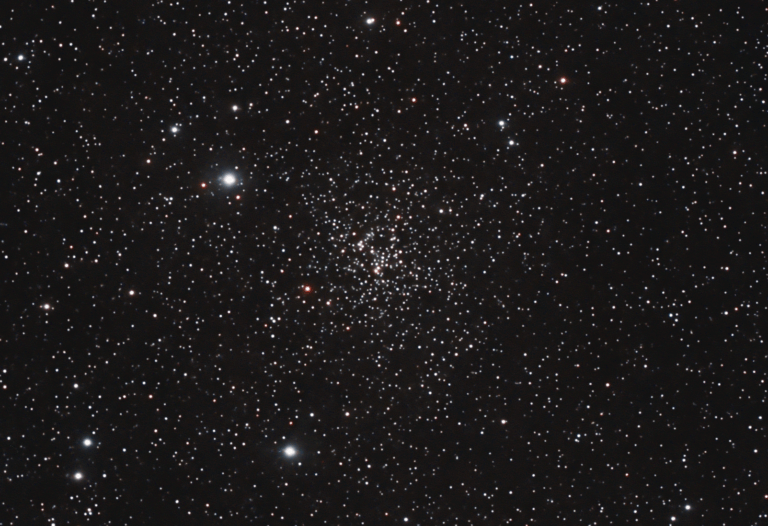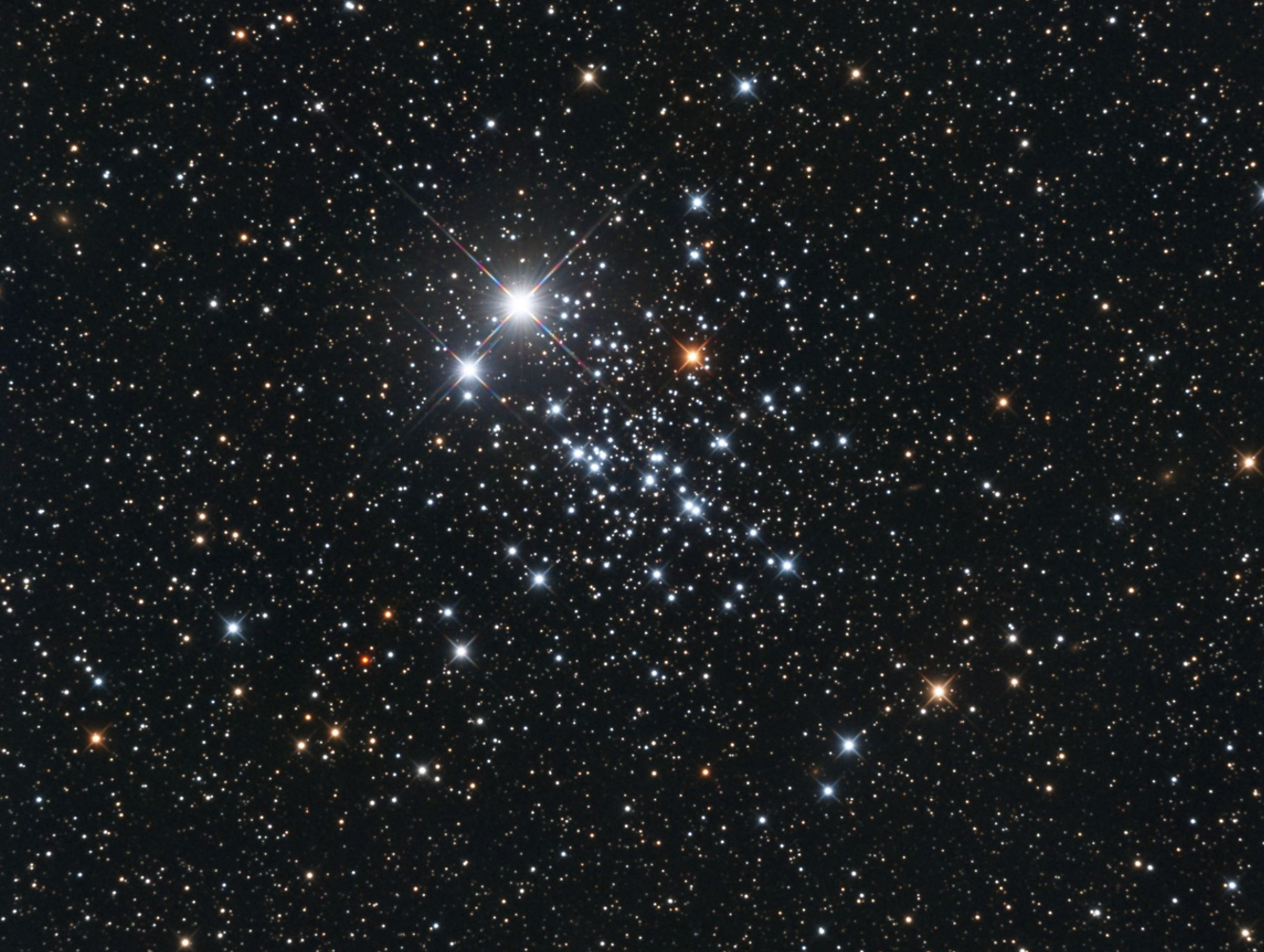
Key Takeaways:
- NGC 457, located in Cassiopeia, was discovered by William Herschel on August 18, 1780.
- The open cluster NGC 457, informally known as the Owl Cluster, is approximately 8,000 light-years distant and estimated to be 21 million years old.
- Comprising roughly 150 stars, NGC 457 features two bright stars, Phi Cassiopeiae (magnitude 5.1) and HD 7902 (magnitude 7.0), often visually interpreted as "eyes" within the cluster's structure.
- The cluster exhibits an overall magnitude of 6.4 and possesses an angular size of 13 arcminutes, and includes notable reddish stars such as the variable supergiant V466 Cas.
The world is overflowing with crazily-named deep-sky objects. However, I am guilty of one such naming, many years ago, in Astronomy and Deep Sky magazines — the Owl Cluster, NGC 457, in Cassiopeia.
This object was discovered by William Herschel on August 18, 1780. When I first looked at this cluster with my Celestron 8, I immediately saw what seemed to be two prominent “eyes” and what appeared to be a distinct body of stars, with feet, and “wings” of bright stars.
So I immediately started calling it the Owl Cluster, which caught on. This showpiece object lies about 8,000 light-years away and is some 21 million years old. It contains approximately 150 stars.
The two brightest stars in the field, Phi Cassiopeiae (which glows at magnitude 5.1) and HD 7902, at magnitude 7.0, are the “eyes.” This cluster also contains some nice reddish stars, including the variable supergiant V466 Cas.
Overall, this fine group of young stars glows at magnitude 6.4 and spans 13′. I hope you’ll enjoy viewing it, and maybe you’ll even join me in seeing an owl.

